Baybayin
| Baybayin ᜊᜌ᜔ᜊᜌᜒᜈ᜔ ᜊᜇ᜔ᜎᜒᜆ᜔ | |
|---|---|
 | |
| Type | |
| Languages | Tagalog, Visayan languages |
Time period | c. 13th century–18th century[1][2] |
Parent systems | |
Sister systems |
Balinese Batak Javanese (Hanacaraka) Lontara Sundanese Rencong Rejang |
| Direction | Left-to-right |
| ISO 15924 |
Tglg, 370 |
Unicode alias | Tagalog |
| U+1700–U+171F | |
Baybayin (Tagalog pronunciation: [baɪˈbaɪjɪn]; pre-kudlit: ᜊᜊᜌᜒ, post-kudlit: ᜊᜌ᜔ᜊᜌᜒᜈ᜔, kudlit + pamudpod: ᜊᜌ᜔ᜊᜌᜒᜈ᜴), also known as Badlit, refers to the various different styles of indigenous writing in The Philippines that are collectively called “Suyat,” including Buhid, Hanunó'o, Tagalog, Tagbanwa (Apurahuano), Kulitan, and others. Although they can all technically considered “Baybayin,” this article will primarily be discussing the Tagalog variety.
Baybayin is an ancient script used primarily by the Tagalog people.[3] Baybayin is an indigenous Indic script[3] that has been widely used in traditional Tagalog domains. It is one of the many suyat scripts in the Philippines. It continued to be used during the early part of the Spanish colonization of the Philippines until largely being supplanted by usage of the Latin alphabet. Baybayin is well known because it was carefully documented by scribes during the colonial era.
The term baybayín literally means "to spell, write, and syllabize" in Tagalog. Baybayin was extensively documented by the Spanish.[4] Some have incorrectly attributed the name Alibata to it,[5][6] but that term was coined by Paul Rodríguez Verzosa[7] after the arrangement of letters of the Arabic alphabet (alif, ba, ta (alibata), "f" having been eliminated for euphony's sake).[8]
It is one of a number of individual writing systems used in Southeast Asia, nearly all of which are abugidas where any consonant is pronounced with the inherent vowel a following it—diacritics being used to express other vowels. Many of these writing systems descended from ancient alphabets used in India over 2000 years ago.
The Archives of the University of Santo Tomas in Manila, one of the largest archives in the Philippines, currently possesses the world’s biggest collection of ancient writings in Baybayin script.[3][9][10][11] The chambers which house the scripts are part of a tentative nomination to UNESCO World Heritage List that is still being deliberated on, along with the entire campus of the University of Santo Tomas.
Overview
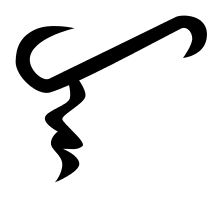
Origins
Baybayin was noted by the Spanish priest Pedro Chirino in 1604 and Antonio de Morga in 1609 to be known by most Filipinos, and was generally used for personal writings, poetry, etc. However, according to William Henry Scott, there were some datus from the 1590s who could not sign affidavits or oaths, and witnesses who could not sign land deeds in the 1620s.[12][13]
Abecedaries
The best known evidence of where this Indic script we call today as Baybayin came about is from the "abecedaries" evidence. It is an example of letters of the script arranged more or less in the order the Spaniards knew, reproduced by the Spanish and other observers in the different regions of Luzon and Visayas. Another source of evidence are the archival documents preserved and recovered.[3]
From these two sources, it is clear that the Baybayin script was used in Luzon, Palawan, Mindoro, as far as Pangasinan in the north, and in Ilocos, Panay, Leyte, and Iloilo, but there are no proof supporting that Baybayin reached Mindanao. From what is available, it seems clear that the Luzon and Palawan varieties have started to develop in different ways in the 1500s, way before the Spaniards conquered what we know today as the Philippines. This puts Luzon and Palawan as the oldest regions where Baybayin was and is used. It is also notable that the variety used in Pampanga had already developed special shapes for four letters by the early 1600s, different from the ones used elsewhere. It is equally important to note that this ancient Baybayin Kapampangan variety is very different from the experiment called "modern Kulitan" which was taught in the late 1990s.[3]
So we can say that there were three somewhat distinct varieties of a single script in the late 1500s and 1600s, though they could not be described as three different scripts any more than the different styles of Latin script across medieval or modern Europe with their slightly different sets of letters and spelling systems.[3]
The only modern scripts that descended directly from the original Baybayin script through natural development are the Pala'wan script inherited from the Tagbanwa in Palawan, the Buhid and Hanunóo scripts in Mindoro, the ancient Kapampangan script used in the 1600s but has been supplanted by a constructed script called "modern Kulitan", and of course the Tagalog script. There is no evidence for any other regional scripts; like the modern Kulitan experiment in Pampanga. Any other scripts are recent inventions based on one or another of the abecedaries from old Spanish descriptions.[3]
Bawas Sign
The confusion over the use of marks may have contributed to the demise of Baybayin over time. The desire of Francisco Lopez (1620) for Baybayin to conform to the Spanish alfabetos paved the way for the invention of a cross sign. Such introduction was uniquely a standalone event that was blindly copied by succeeding writers up to the present. Sevilla and Alvero (1939) said, “The marks required in the formation of syllables are: the tuldok or point (.) and the bawas or minus sign (-).” The bawas or minus sign (-) that is placed before the script to remove the paired vowel appears more logical than the cross or plus sign (+) of Lopez.[13]
New Origin (Giant Clam) Theory
Guilermo Tolentino was one of the very few individuals who tried to put forward the possible Filipino origins of Baybayin and numerals in his book, "Ang Wika at Baybaying Tagalog 1937.” But in 2009, Comandante presented a PhD dissertation entitled "The Role of Giant Clams in the Development of the Ancient Baybayin Script." The dissertation also included a theory of the origins of Baybayin numerals.[13]
A summary of the Baybayin word meanings from San Buenaventura 1613 is as follow: aa, ii, and uu refer to chanting; baba means inside; kaka means biggest in a group; dada/dara means bloodletting; gaga means to show; haha means to break; lala means to scrape; mama means to eat; nana means blood; nganga means open wide; papa means partake; sasa means to break; tata means split; wawa means opening; yaya means together. The meanings altogether point to an activity using giant clams as part of a ritual offering and partaking thereafter.[13]
The most significant evidence of the relation of Giant Clams to Baybayin is found in the book, A Lexicographic Study of Tayabas Tagalog of Quezon Province done by Arsenio Manuel (UP Faculty) 1971. The word haha is listed to mean "hiwang malaki" (cut wide) and hahain means "bukahin ang manglit" (open the manglit ) while manglit means "higanteng kabibe" (giant clam).[13]
Influence of Greater India
Historically Southeast Asia was under the influence of Ancient India, where numerous Indianized principalities and empires flourished for several centuries in Thailand, Indonesia, Malaysia, Singapore, Philippines, Cambodia and Vietnam. The influence of Indian culture into these areas was given the term indianization.[14] French archaeologist, George Coedes, defined it as the expansion of an organized culture that was framed upon Indian originations of royalty, Hinduism and Buddhism and the Sanskrit dialect.[15] This can be seen in the Indianization of Southeast Asia, spread of Hinduism and Buddhism. Indian diaspora, both ancient (PIO) and current (NRI), played an ongoing key role as professionals, traders, priests and warriors.[16][17][18][18] Indian honorifics also influenced the Malay, Thai, Filipino and Indonesian honorifics.[19] Examples of these include Raja, Rani, Maharlika, Datu, etc. which were transmitted from Indian culture to Philippines via Malays and Srivijaya empire.
Laguna Copperplate Inscription, a legal document inscribed on a copper plate in 900 AD, is the earliest known written document found in the Philippines, is written in Indian Sanskrit and Brahmi script based Indonesian Kawi script.[20]
Kawi
The Kawi script originated in Java, and was used across much of Maritime Southeast Asia.

It is a legal document with the inscribed date of Saka era 822, corresponding to April 21, 900 AD Laguna Copperplate Inscription. It was written in the Kawi script in a variety of Old Malay containing numerous loanwords from Sanskrit and a few non-Malay vocabulary elements whose origin is ambiguous between Old Javanese and Old Tagalog. One hypothesis therefore reasons that, since Kawi is the earliest attestation of writing on the Philippines, then Baybayin may be descended from Kawi. It is the kawi inspired ancient alphabet of the people of Baybay in the Lakanate of Lawan used to write letters to relatives in far places where they migrate. Scott mentioned the Bingi of Lawan siday (local epic) originally written in Baybay, a place in ancient Lawan.
A second example of Kawi script can be seen on the Butuan Ivory Seal, though it has not been dated.
An earthenware burial jar, called the "Calatagan Pot," found in Batangas is inscribed with characters strikingly similar to Baybayin, and is claimed to have been inscribed ca. 1300 AD. However, its authenticity has not yet been proven.
Many of the writing systems of Southeast Asia descended from ancient scripts used in India over 2000 years ago. Although Baybayin shares some important features with these scripts, such as all the consonants being pronounced with the vowel a and the use of special marks to change this sound, there is no evidence that it is so old.
The shapes of the baybayin characters bear a slight resemblance to the ancient Kavi script of Java, Indonesia, which fell into disuse in the 15th century. However, as mentioned earlier in the Spanish accounts, the advent of the Baybayin in the Philippines was considered a fairly recent event in the 16th century and the Filipinos at that time believed that their Baybayin came from Borneo.
This theory is supported by the fact that the Baybayin script could not show syllable final consonants, which are very common in most Philippine languages. (See Final Consonants) This indicates that the script was recently acquired and had not yet been modified to suit the needs of its new users. Also, this same shortcoming in the Baybayin was a normal trait of the script and language of the Bugis people of Sulawesi, which is directly south of the Philippines and directly east of Borneo. Thus most scholars believe that the Baybayin may have descended from the Buginese script or, more likely, a related lost script from the island of Sulawesi.
Although one of Ferdinand Magellan's shipmates, Antonio Pigafetta, wrote that the people of the Visayas were not literate in 1521, the Baybayin had already arrived there by 1567 when Miguel López de Legazpi reported that, “They [the Visayans] have their letters and characters like those of the Malays, from whom they learned them.” B1 Then, a century later Francisco Alcina wrote about:
The characters of these natives, or, better said, those that have been in use for a few years in these parts, an art which was communicated to them from the Tagalogs, and the latter learned it from the Borneans who came from the great island of Borneo to Manila, with whom they have considerable traffic... From these Borneans the Tagalogs learned their characters, and from them the Visayans, so they call them Moro characters or letters because the Moros taught them... [the Visayans] learned [the Moros'] letters, which many use today, and the women much more than the men, which they write and read more readily than the latter.[7]
But other sources say that the Visayans derived their writing system from those of Toba, Borneo, Celebes, Ancient Java, and from the Edicts of the ancient Indian emperor Ashoka.[21]

Old Sumatran "Malay" scripts
Another hypothesis states that a script or script used to write one of the Malay languages was adopted and became Baybayin. In particular, the Pallava script from Sumatra is attested to the 7th century.[22]
Old Assamese
The eastern nāgarī script was a precursor to devanāgarī. This hypothesis states that a version of this script was introduced to the Philippines via Bengal, before ultimately evolving into baybayin.
Cham
Finally, an early Cham script from Champa — in what is now southern Vietnam and southeastern Cambodia — could have been introduced or borrowed and adapted into Baybayin.
Usage in Traditional Seals
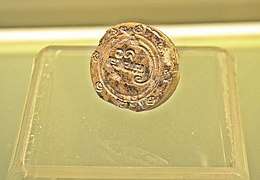
Like Japan and Korea, the Philippines also had a sealing culture prior to Spanish colonization. However, when the Spaniards succeeded in colonizing the islands, they abolished the practice and burned all documents they captured from the natives while forcefully establishing a Roman Catholic-based rule. Records on Philippine seals were forgotten until in the 1970s when actual ancient seals made of ivory were found in an archaeological site in Butuan. The seal, now known as the Butuan Ivory Seal, has been declared as a National Cultural Treasure. The seal is inscribed with the word "Butwan" through a native suyat script. The discovery of the seal proved the theory that pre-colonial Filipinos, or at least in coastal areas, used seals on paper. Before the discovery of the seal, it was only thought that ancient Filipinos used bamboo, metal, bark, and leaves for writing. The presence of paper documents in the classical era of the Philippines is also backed by a research of Otley Beyer stating that Spanish friars 'boasted' about burning ancient Philippine documents with suyat inscriptions, one of the reasons why ancient documents from the Philippines are almost non-existent in present time. The ivory seal is now housed at the National Museum of the Philippines. Nowadays, younger generations are trying to revive the usage of seals, notably in signing pieces of art such as drawings, paintings, and literary works.[23]
Suyat
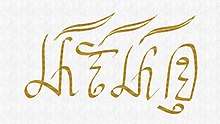
The collection of distinct scripts used by various indigenous groups in the Philippines, including baybayin, are recently called as suyat, which a neutral term of script, by cultural organizations such as Sanghabi and the Heritage Conservation Society.[24]
Characteristics
The writing system is an abugida system using consonant-vowel combinations. Each character, written in its basic form, is a consonant ending with the vowel "A". To produce consonants ending with the other vowel sounds, a mark is placed either above the consonant (to produce an "E" or "I" sound) or below the consonant (to produce an "O" or "U" sound). The mark is called a kudlit. The kudlit does not apply to stand-alone vowels. Vowels themselves have their own glyphs. There is only one symbol for D or R as they were allophones in most languages of the Philippines, where R occurred in intervocalic positions and D occurred elsewhere. The grammatical rule has survived in modern Filipino, so that when a d is between two vowels, it becomes an r, as in the words dangál (honour) and marangál (honourable), or dunong (knowledge) and marunong (knowledgeable), and even raw for daw (he said, she said, they said, it was said, allegedly, reportedly, supposedly) and rin for din (also, too) after vowels.[7] This variant of the script is not used for Ilokano, Pangasinan, Bikolano, and other Philippine languages to name a few, as these languages have separate symbols for D and R.
Writing materials
Traditionally, baybayin was written upon palm leaves with styli or upon bamboo with knives.[25] The curved shape of the letterforms of baybayin is a direct result of this heritage: straight lines would have torn the leaves.[26] During the era of Spanish colonization, most baybayin began being written with ink on paper, but in some parts of the country the traditional art form has been retained.[27] Many of the baybayin writings in scrolls of paper were afterwards destroyed by Spanish priests as a form of fun. Otley Beyer wrote in 1921, “It cannot be said that such writings did not exist, since the early Filipinos were even more literate than the Mexicans... One Spanish priest in Southern Luzon boasted of having destroyed more than three hundred scrolls written in native characters.”[13]
Significant examples
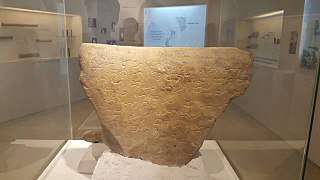
The Ticao stone inscription, also known as the Monreal stone or Rizal stone, is a limestone tablet that contains Baybayin characters. Found by pupils of Rizal Elementary School on Ticao Island in Monreal town, Masbate, which had scraped the mud off their shoes and slippers on two irregular shaped limestone tablets before entering their classroom, they are now housed at a section of the National Museum, which weighs 30 kilos, is 11 centimeters thick, 54 cm long and 44 cm wide while the other is 6 cm thick, 20 cm long and 18 cm wide.[28][29]
Two styles of writing

Virama Kudlit "style"
The original writing method was particularly difficult for the Spanish priests who were translating books into the vernaculars. Because of this, Francisco López introduced his own kudlit in 1620, called a sabat, that cancelled the implicit a vowel sound. The kudlit was in the form of a "+" sign,[30] in reference to Christianity. This cross-shaped kudlit functions exactly the same as the virama in the Devanagari script of India. In fact, Unicode calls this kudlit the Tagalog Sign Virama. See sample above in Characteristics Section.
"Nga" character
A single character represented "nga". The current version of the Filipino alphabet still retains "ng" as a digraph.
Punctuation
Words written in baybayin were written in a continuous flow, and the only form of punctuation was a single vertical line (᜵), or more often, a pair of vertical lines (᜶). These vertical lines fulfill the function of a comma, period, or unpredictably separate sets of words.[7]
Pre-colonial and colonial usage
Baybayin historically was used in Tagalog and to a lesser extent Kapampangan speaking areas. Its use spread to Ilokanos when the Spanish promoted its use with the printing of Bibles. Related scripts, such as Hanunóo, Buhid, and Tagbanwa are still used today, along with Kapampangan script.
Among the earliest literature on the orthography of Visayan languages were those of Jesuit priest Ezguerra with his Arte de la lengua bisaya in 1747[31] and of Mentrida with his Arte de la lengua bisaya: Iliguaina de la isla de Panay in 1818 which primarily discussed grammatical structure.[32] Based on the differing sources spanning centuries, the documented syllabaries also differed in form.
Modern usage
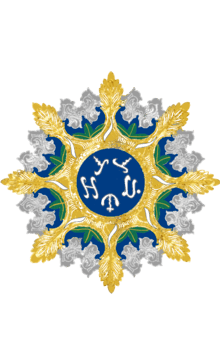
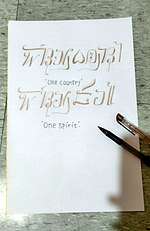
Baybayin script, while recognizable, is generally not understood in the Philippines. Though there has been a resurgence in interest in Baybayin, the characters are still used artistically and as a symbol of Filipino heritage. Some cultural and activist groups use Baybayin versions of their acronyms alongside the use of Latin script, which is also sometimes given a baybayin-esque style. Baybayin tattoos and brush calligraphy are also popular.
It is used in the most current New Generation Currency series of the Philippine peso issued in the last quarter of 2010. The word used in the bills was "Pilipino" (ᜉᜒᜎᜒᜉᜒᜈᜓ).
It is also used in Philippine passports, specifically the latest e-passport edition issued 11 August 2009 onwards. The odd pages of pages 3–43 have "ᜀᜅ᜔ ᜃᜆᜓᜏᜒᜍᜈ᜔ ᜀᜌ᜔ ᜈᜄ᜔ᜉᜉᜇᜃᜒᜎ ᜐ ᜁᜐᜅ᜔ ᜊᜌᜈ᜔" ("Ang katuwiran ay nagpapadakila sa isang bayan"/"Righteousness exalts a nation") in reference to Proverbs 14:34.
Baybayin influence may also explain the preference for making acronyms from initial consonant-vowel pairs of the component words, rather than the more common use of just the first letter.
A number of legislative bills have been proposed periodically aiming to promote the writing system, none of which have yet been passed into law. The latest so far is the "National Writing System Act" (House Bill 1022[33]/Senate Bill 433[34]), which seems supported by Rappler with its articles on the matter[35], one of which suggesting a learning period before enforcement.[36]
_script.svg.png) The lyrics of Lupang Hinirang in Baybayin rendering.
The lyrics of Lupang Hinirang in Baybayin rendering.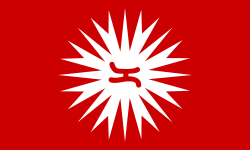 Flag of Katipunan in Magdiwang faction, with the Ka baybayin character.
Flag of Katipunan in Magdiwang faction, with the Ka baybayin character..svg.png) Seal of the National Historical Commission of the Philippines.
Seal of the National Historical Commission of the Philippines.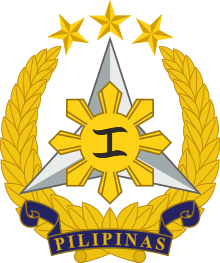 Emblem of the Armed Forces of the Philippines.
Emblem of the Armed Forces of the Philippines. Seal of the Philippine Army.
Seal of the Philippine Army..svg.png) Logo of the National Library of the Philippines. The Baybayin text reads as karunungan (wisdom).
Logo of the National Library of the Philippines. The Baybayin text reads as karunungan (wisdom). Logo of the National Museum of the Philippines.
Logo of the National Museum of the Philippines. Logo of the Cultural Center of the Philippines.
Logo of the Cultural Center of the Philippines.
Characters






|
vowels
|
b
|
k
|
d/r
|
g
|
h
|
l
|
m
|
n
|
ng
|
p
|
s
|
t
|
w
|
y
|
Punctuation and Spelling
The words and sentences of Old Tagalog are the roots of the Modern Tagalog language. Some of the words and sentences have evolved over time (like the word Babuy or Pig, which became Baboy in modern Tagalog), but some of the words in Old Tagalog (like Budhi (conscience) and Hari or King), have survived and are in common use in Modern Tagalog.
Baybayin writing makes use of only one punctuation mark, the Philippine double punctuation (᜶).[37]
Example sentences
"ᜌᜋᜅ᜔ ᜇᜒ ᜈᜄ᜔ᜃᜃᜂᜈᜏᜀᜈ᜔᜵ ᜀᜌ᜔ ᜋᜄ᜔ ᜉᜃᜑᜒᜈᜑᜓᜈ᜔᜶"
Yamáng ‘di nagkaka-unawaan, ay mag paká-hinahon.
(They that have a misunderstanding should stay calm.)
"ᜋᜄ᜔ᜆᜈᜒᜋ᜔ ᜀᜌ᜔ ᜇᜒ ᜊᜒᜇᜓ"
Magtanim ay 'di birò.
(Planting is not a joke.)
"ᜋᜋᜑᜎᜒᜈ᜔ ᜃᜒᜆ ᜑᜅ᜔ᜄᜅ᜔ ᜐ ᜉᜓᜋᜓᜆᜒ ᜀᜅ᜔ ᜊᜓᜑᜓᜃ᜔ ᜃᜓ"
Mámahalin kitá hanggáng sa pumutí ang buhók ko.
(I will love you until my hair turns white.)
Collation
In the Doctrina Christiana, the letters of Baybayin were collated as:
A O/U E/I H P K S L T N B M G D/R Y NG W.[38]
In Unicode the letters are collated as:
A I U Ka Ga Nga Ta Da Na Pa Ba Ma Ya La Wa Sa Ha.[39]
Examples
The Lord's Prayer (Ama Namin)
| Baybayin script | Latin script | English (1928 BCP;[40] current Filipino Catholic version[41]) |
|---|---|---|
|
ᜀᜋ ᜈᜋᜒᜈ᜔ ᜐᜓᜋᜐᜎᜅᜒᜆ᜔ ᜃ, ᜐᜋ᜔ᜊᜑᜒᜈ᜔ ᜀᜅ᜔ ᜅᜎᜈ᜔ ᜋᜓ; ᜋᜉᜐᜀᜋᜒᜈ᜔ ᜀᜅ᜔ ᜃᜑᜇᜒᜀᜈ᜔ ᜋᜓ; ᜐᜓᜈ᜔ᜇᜒᜈ᜔ ᜀᜅ᜔ ᜎᜓᜂᜊ᜔ ᜋᜓ ᜇᜒᜆᜓ ᜐ ᜎᜓᜉ, ᜉᜇ ᜈᜅ᜔ ᜐ ᜎᜅᜒᜆ᜔. ᜊᜒᜄ᜔ᜌᜈ᜔ ᜋᜓ ᜃᜋᜒ ᜅᜌᜓᜈ᜔ ᜅ᜔ ᜀᜋᜒᜅ᜔ ᜃᜃᜈᜒᜈ᜔ ᜐ ᜀᜇᜂ ᜀᜇᜂ; ᜀᜆ᜔ ᜉᜆᜏᜍᜒᜈ᜔ ᜋᜓ ᜃᜋᜒ ᜐ ᜀᜋᜒᜅ᜔ ᜋᜅ ᜐᜎ ᜉᜍ ᜈᜅ᜔ ᜉᜄ᜔ᜉᜉᜆᜏᜇ᜔ ᜈᜋᜒᜈ᜔ ᜐ ᜋᜅ ᜈᜄ᜔ᜃᜃᜐᜎ ᜐ ᜀᜋᜒᜈ᜔; ᜀᜆ᜔ ᜑᜓᜏᜄ᜔ ᜋᜓ ᜃᜋᜒ ᜁᜉᜑᜒᜈ᜔ᜆᜓᜎᜓᜆ᜔ ᜐ ᜆᜓᜃ᜔ᜐᜓ, ᜀᜆ᜔ ᜁᜀᜇ᜔ᜌ ᜋᜓ ᜃᜋᜒ ᜐ ᜎᜑᜆ᜔ ᜅ᜔ ᜋᜐᜋ. ᜐᜉᜄ᜔ᜃᜆ᜔ ᜁᜌᜓ ᜀᜅ᜔ ᜃᜑᜍᜒᜀᜈ᜔, ᜀᜅ᜔ ᜃᜉᜅ᜔ᜌᜍᜒᜑᜈ᜔, ᜀᜆ᜔ ᜀᜅ᜔ ᜃᜇᜃᜒᜎᜀᜈ᜔, ᜋᜄ᜔ᜉᜃᜌ᜔ᜎᜈ᜔ᜋᜈ᜔. ᜀᜋᜒᜈ᜔/ᜐᜒᜌ ᜈᜏ. |
Ama namin, sumasalangit ka, |
Our Father who art in heaven, |
Universal Declaration of Human Rights
| Baybayin script | Latin script | English translation |
|---|---|---|
|
ᜀᜅ᜔ ᜎᜑᜆ᜔ ᜈᜅ᜔ ᜆᜂ ᜀᜌ᜔ ᜁᜐᜒᜈᜒᜎᜅ᜔ ᜈ ᜋᜎᜌ ᜀᜆ᜔ ᜉᜈ᜔ᜆᜌ᜔ᜉᜈ᜔ᜆᜌ᜔ ᜐ ᜃᜍᜅᜎᜈ᜔ ᜀᜆ᜔ ᜃᜍᜉᜆᜈ᜔‖ ᜐᜒᜎ ᜀᜌ᜔ ᜉᜒᜈᜄ᜔ᜃᜎᜓᜂᜊᜈ᜔ ᜈᜅ᜔ ᜊᜓᜇ᜔ᜑᜒ ᜀᜆ᜔ ᜇᜉᜆ᜔ ᜋᜄ᜔ᜉᜎᜄᜌᜈ᜔ ᜀᜅ᜔ ᜁᜐᜆ᜔ᜁᜐ ᜐ ᜇᜒᜏ ᜈᜅ᜔ ᜉᜄ᜔ᜃᜃᜉᜆᜒᜍᜈ᜔ |
Ang lahat ng tao'y isinilang na malaya at pantay-pantay sa karangalan at mga karapatan. |
All human beings are born free and equal in dignity and rights. |
Motto of the Philippines
| Baybayin script | Latin script | English translation |
|---|---|---|
|
ᜋᜃᜇᜒᜌᜓᜐ᜔᜵ |
Maka-Diyos, |
For God, |
| Baybayin script | Latin script | English translation |
|---|---|---|
|
ᜁᜐᜅ᜔ ᜊᜈ᜔ᜐ᜵ ᜁᜐᜅ᜔ ᜇᜒᜏ |
Isang Bansa, |
One Country, |
Unicode
Baybayin was added to the Unicode Standard in March, 2002 with the release of version 3.2.
Block
The Unicode block for Baybayin, called Tagalog, is U+1700–U+171F:
| Tagalog[1][2] Official Unicode Consortium code chart (PDF) | ||||||||||||||||
| 0 | 1 | 2 | 3 | 4 | 5 | 6 | 7 | 8 | 9 | A | B | C | D | E | F | |
| U+170x | ᜀ | ᜁ | ᜂ | ᜃ | ᜄ | ᜅ | ᜆ | ᜇ | ᜈ | ᜉ | ᜊ | ᜋ | ᜌ | ᜎ | ᜏ | |
| U+171x | ᜐ | ᜑ | ᜒ | ᜓ | ᜔ | |||||||||||
| Notes | ||||||||||||||||
Representation of the character "Ra"
Although it violates the Unicode Standard, U+170D is becoming the de facto standard for representing the character Ra (ᜍ), due to its use as such in commonly available Baybayin fonts.[42]
Philippines Unicode Keyboard Layout with Baybayin
It is possible to type Baybayin directly from the keyboard without the need to use online typepads. The Philippines Unicode Keyboard Layout[43] includes different sets of Baybayin layout for different keyboard users: QWERTY, Capewell-Dvorak, Capewell-QWERF 2006, Colemak, and Dvorak, all available in Microsoft Windows and GNU/Linux 32-bit and 64-bit installations.
The keyboard layout with Baybayin can be downloaded at this page.
See also
| Wikimedia Commons has media related to Baybayin. |
References
- ↑ "Tagalog (Baybayin)". SIL International. Retrieved October 10, 2014.
- ↑ "Tagalog". Retrieved October 10, 2014.
- 1 2 3 4 5 6 7 Is Baybayin really a writing system in the entire pre-hispanic Philippines? What's the basis for making it a national writing system if pre-hispanic kingdoms weren’t homogenous?
- ↑ Scott 1984, pp. 57–58.
- ↑ Halili, Mc (2004). Philippine history. Rex. p. 47. ISBN 978-971-23-3934-9.
- ↑ Duka, C (2008). Struggle for Freedom' 2008 Ed. Rex. pp. 32–33. ISBN 978-971-23-5045-0.
- 1 2 3 4 Morrow, Paul. "Baybayin, the Ancient Philippine script". MTS. Archived from the original on August 8, 2010. Retrieved September 4, 2008. .
- ↑ Baybayin History, Baybayin, archived from the original on June 11, 2010, retrieved May 23, 2010 .
- ↑ Archives, University of Santo Tomas, archived from the original on May 24, 2013, retrieved June 17, 2012 .
- ↑ "UST collection of ancient scripts in 'baybayin' syllabary shown to public", Inquirer, retrieved June 17, 2012 .
- ↑ UST Baybayin collection shown to public, Baybayin, retrieved June 18, 2012 .
- ↑ Scott 1984, p. 210
- 1 2 3 4 5 6 The Life, Death, and Resurgence of Baybayin
- ↑ Acharya, Amitav. "The "Indianization of Southeast Asia" Revisited: Initiative, Adaptation and Transformation in Classical Civilizations" (PDF). amitavacharya.com.
- ↑ Coedes, George (1967). The Indianized States of Southeast Asia. Australian National University Press.
- ↑ Lukas, Helmut (May 21–23, 2001). "1 THEORIES OF INDIANIZATIONExemplified by Selected Case Studies from Indonesia (Insular Southeast Asia)". International SanskritConference.
- ↑ Krom, N.J. (1927). Barabudur, Archeological Description. The Hague.
- 1 2 Smith, Monica L. (1999). ""INDIANIZATION" FROM THE INDIAN POINT OF VIEW: TRADE AND CULTURAL CONTACTS WITH SOUTHEAST ASIA IN THE EARLY FIRST MILLENNIUM C.E.')". Journal of the Economic and Social History of the Orient,. 42. (11–17). JSTOR 3632296.
- ↑ Krishna Chandra Sagar, 2002, An Era of Peace, Page 52.
- ↑ Munoz, Paul Michel (2006). Early Kingdoms of the Indonesian Archipelago and the Malay Peninsula. Continental Sales, Incorporated. p. 236. ISBN 9789814155670.
- ↑ Isabelo de los Reyes y Florentino, Las Islas Visayas en la Época de la Conquista (Segunda edición), Manila: 1889, Tipo-Litografía de Chofké y C.a, p. 82.
- ↑ "Bahasa Melayu Kuno". Bahasa Malaysia Online Learning Resource. Archived from the original on 26 December 2010. Retrieved 11 September 2014.
- ↑ Nation Museum Collections Seals
- ↑ Protect all PH writing systems, heritage advocates urge Congress
- ↑ Filipinas. Filipinas Pub. 1995-01-01. p. 60.
- ↑ "Cochin Palm Leaf Fiscals". Princely States Report > Archived Features. 2001-04-01. Archived from the original on 2017-01-13. Retrieved 2017-01-25.
- ↑ Lazaro, David (2009-10-23). "The Fundamentals of Baybayin". BakitWhy. Retrieved 2017-01-25 – via The Bathala Project.
- ↑ Muddied stones reveal ancient scripts
- ↑ Romancing the Ticao Stones: Preliminary Transcription, Decipherment, Translation, and Some Notes
- ↑ Tagalog script Archived August 23, 2008, at the Wayback Machine.. Accessed September 2, 2008.
- ↑ P. Domingo Ezguerra (1601–1670) (1747) [c. 1663]. Arte de la lengua bisaya de la provincia de Leyte. apendice por el P. Constantino Bayle. Imp. de la Compañía de Jesús.
- ↑ Trinidad Hermenegildo Pardo de Tavera (1884). Contribución para el estudio de los antiguos alfabetos filipinos. Losana.
- ↑ {{cite url=http://www.congress.gov.ph/legisdocs/basic_17/HB01022.pdf|publisher=17th Philippine House of Representatives|accessdate=24 September 2018|date=4 July 2016}}
- ↑ {{cite url=https://www.senate.gov.ph/lis/bill_res.aspx?congress=17&q=SBN-433|publisher=17th Philippine Senate|accessdate=24 September 2018|date=19 July 2016}}
- ↑ {{cite url=https://www.rappler.com/previous-articles?filterMeta=Baybayin|publisher=Rappler|accessdate=24 September 2018}}
- ↑ "'Educate first': Filipinos react to Baybayin as national writing system". Rappler. 27 August 2018. Retrieved 24 September 2018.
- ↑ "Chapter 17: Indonesia and Oceania, Philippine Scripts" (PDF). Unicode Consortium. June 2018.
- ↑ "Doctrina Cristiana". Project Gutenberg.
- ↑ Unicode Baybayin Tagalog variant
- ↑ "The 1928 Book of Common Prayer: Family Prayer". Retrieved 14 October 2016.
- ↑ Catechism of the Catholic Church
- ↑ "Modern Alphabet and Baybayin -Final Version | Flickr - Photo Sharing". Flickr.
- ↑ "Philippines Unicode Keyboard Layout". techmagus™.
- Scott, William Henry (1984). Prehispanic Source Materials for the study of Philippine History. New Day Publishers. ISBN 971-10-0226-4.
External links
- House Bill 160, aka National Script Act of 2011
- Ang Baybayin by Paul Morrow
- Unicode Tagalog Range 1700-171F (in PDF)
- Yet another Baybayin chart
- Baybayin online translator
- Baybayin video tutorial
- Baybayin Unicode Keyboard Layout for Mac OSX
- Snoworld™'s Baybayin Unicode Typepad
- Philippines Unicode Keyboard Layout with Baybayin, for Microsoft Windows and GNU/Linux both 32-bit and 64-bit
- Baybayin Keyboard extension for ChromeOS (Chromebooks)
- Online Baybayin Library
- Baybayin mobile translator application
- Nordenx's Baybayin Unicode Typepad
- Sinaunang baybayin
Font downloads
- Badlit Script
- Baybayin Modern Fonts
- Christian Cabuay's Baybayin Brush Font
- Paul Morrow's Baybayin Fonts
- Tagalog – Unicode character table
